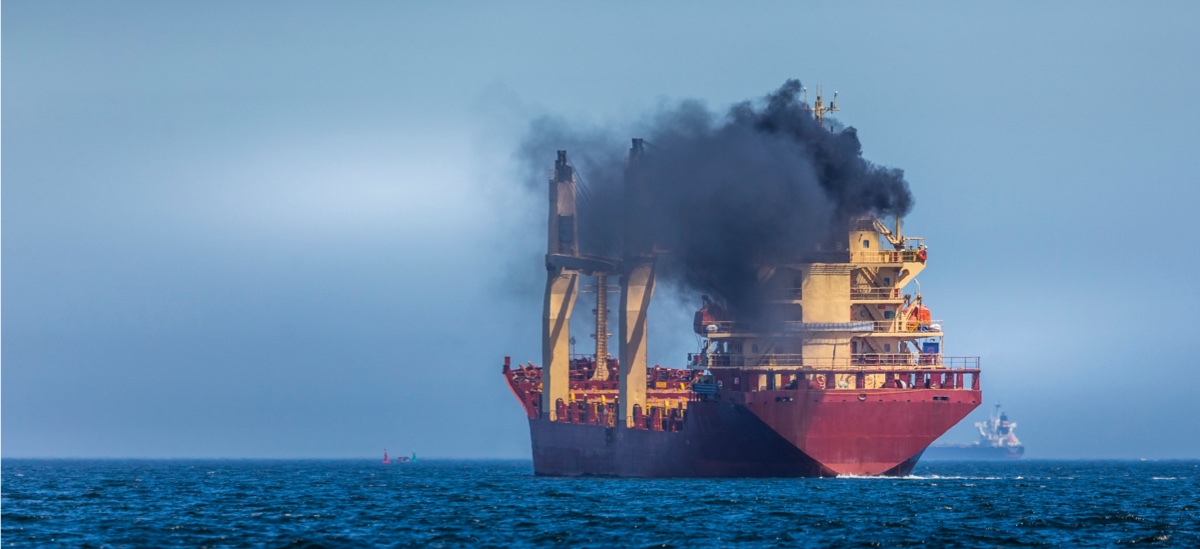The maritime industry is navigating through a change in communication technologies, marked by breakthroughs in satellite technology. Notably, the introduction of satellite connectivity, with innovations such as the Low Earth Orbit (LEO) satellite constellations exemplified by Starlink, promises higher bandwidth, near-global coverage, and reduced costs compared to traditional geostationary satellites. The maritime satellite communication market, valued at $2.01 billion in 2020, is projected to soar to $3.62 billion by 2027, reflecting an 8.5% CAGR, as reported by Euroconsult.
The catalyst for this technological pivot has partly been the COVID-19 pandemic, which highlighted the vulnerabilities of existing communication infrastructures as crews were marooned at sea for prolonged durations. Enhanced satellite connectivity has since emerged as a vital link, ensuring seamless communication between vessels and shore, facilitating real-time data exchange including navigational updates and engine diagnostics, thus steering away from the era of delayed, intermittent communications.
The evolution of ship-to-shore communication
Historically, maritime communication evolved from semaphore and Morse code to radiotelegraphy, still prevalent but range-limited. The adoption of the internet onboard allowed emails and phone calls, yet these means grapple with data management and cost challenges. Emails are often sent in bulk, leading to data overload, while phone calls remain expensive and limited in scope. However, the dawn of advanced satellite networks heralds a new era of data-driven maritime operations, enabling real-time, high-speed data exchange.
Real-time data sharing for improved fleet management
The surge in ship-to-shore data bandwidth, facilitated by enhanced satellite networks, has laid the foundation for a paradigm shift in maritime operations monitoring and management. This shift enables a continuous and high-speed data link between vessels at sea and operations on land, empowering shore-based monitoring centers to receive and process data in near-real-time. High-speed data transmission unlocked by these networks enables a level of precision in monitoring previously unattainable.
This capacity for dynamic and responsive ship management is further enhanced by artificial intelligence (AI), which stands at the frontier of extracting vast datasets into actionable insights, ultimately contributing to the company’s bottom line. The advent of these sophisticated communication systems not only streamlines operational procedures but also significantly improves the capacity for remote monitoring and management of maritime activities, empowering fleet managers to oversee their vessels with an unprecedented level of detail and accuracy.
The integration of AI-powered fleet management dashboards enhances operational efficiency and decision-making processes. By leveraging AI for data analysis, these dashboards provide insights into safety events, relevant trends, risk scores of ships, and even crew well-being, facilitating remote monitoring of vessel conditions, crew safety, and navigation, and ultimately contributing to decarbonization efforts.
AI-based fleet management dashboards allow for a deeper understanding of ship operations, facilitating the adoption of predictive analytics, which plays a crucial role in optimizing performance and enhancing sustainability measures. Research supports the potential environmental benefits of such technologies. For instance, predictive analytics has been identified as a key tool in reducing fuel consumption significantly. According to the Fourth Greenhouse Gas Study 2020 by the IMO, predictive analytics in maritime operations can reduce fuel consumption by 2-7%, contributing to sustainability efforts.
On the safety front, the integration of AI extends beyond efficiency and environmental benefits, significantly impacting maritime safety. Improved communication systems, which are part of these AI enhancements, have the potential to dramatically decrease maritime accidents by facilitating route planning, weather predictions, and hazard identifications, which are critical in preventing accidents at sea, highlighting the significance of AI for maritime navigation.
FleetView for fleet operators and management
One notable application of AI in maritime communication is evident in safety monitoring systems like Orca AI. By leveraging AI algorithms and computer vision, Orca AI can analyze various factors such as location, season, speed, and visibility to model safety and provide real-time insights into potential risks. This contrasts with traditional noon reports, which offer limited visibility and are often sent only once a day. With Orca AI, shore-based offices gain continuous visibility into ship operations, eliminating the need for speculation and enabling proactive decision-making.
Moreover, AI-driven systems enable near-real-time updates and enhanced visibility between vessels and onshore headquarters. Fleet managers can receive alerts on events of interest, monitor safety and efficiency performance, and optimize routes based on dynamic factors like weather changes or traffic. For the first time, fleet managers can monitor and improve safety and efficiency performance under various COLREG situations. This level of precision and responsiveness was previously unattainable, revolutionizing maritime operations management.
The partnership between human expertise and technological progress
The rise of satellite communication technology, coupled with AI and predictive analytics, marks a significant shift in the maritime industry. This move towards data-driven operations promises better efficiency, fewer accidents, and a stronger focus on sustainability. These digital tools not only transform fleet management but also significantly impact seafarers, turning seafaring into a more tech-savvy profession. Equipped with AI systems and real-time monitoring, seafarers navigate maritime environments with greater confidence and precision. As the industry embraces these innovations, it becomes more attractive to skilled individuals intrigued by the challenges and opportunities of smart technology. More and more, it becomes evident that seafarers play a central role in shaping a safer, more efficient, and environmentally conscious maritime industry, highlighting the vital partnership between human expertise and technological progress.










